LETHRINIDAE
Emperors
By Hiroyuki Motomura and Koichi Shibukawa
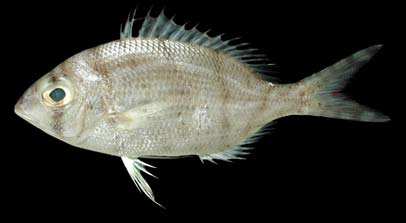 Gymnocranius griseus |
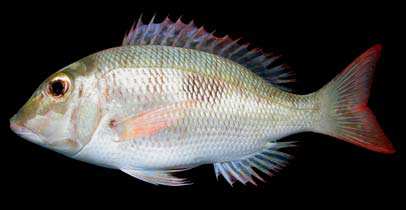 Lethrinus harak |
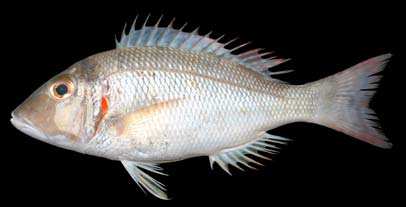 Lethrinus lentjan |
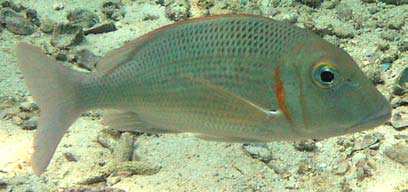 Lethrinus mahsena |
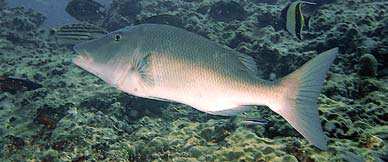 Lethrinus nebulosus |
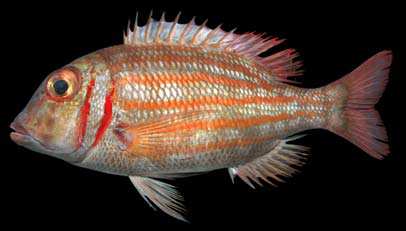 Lethrinus ornatus |
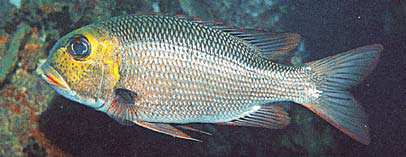 Monotaxis grandoculis |
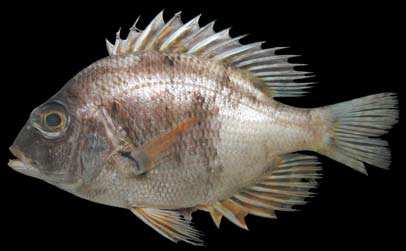 Wattsia mossambica |
|
Medium to large-sized (up to 100 cm), oblong and compressed fishes. Body compressed, covered with ctenoid scales; lateral line continuous. Cheek scales absent in Lethrinus, whereas present in the other genera; mouth terminal with relatively thick lips; strong canines at front of jaws; either conical or molariform teeth on sides of jaws; no teeth on roof of mouth; branchiostegals 6. A single dorsal fin with X spines and 9-10 soft rays; anal fin with III spines and 8-10 soft rays; pectoral fin with 13-15 soft rays; pelvic fin below base of pectoral fin, with I spine and 5 soft rays; caudal fin emarginated or forked. Scales ctenoid, moderate in size. Vertebrae 24. Color: head and body silvery, gray, and light or reddish brown, frequently mottled, spotted or striped with dusky, blue, yellow or red. Similar families occurring in the area. Haemulidae: chin with distinct pores; scales on cheek. Lutjanidae: teeth on roof of mouth; scales on cheek. Sparidae: usually more spines in dorsal fin; scales on cheek. Remarks. Commonly found in coastal waters around coral and rocky reefs, seagrass beds and mangroves. Carnivorous, feeds on various organisms, e.g., fishes, mollusks, crustaceans, polychaetes, and sea urchins. Esteemed as food fish, caught by handline, traps and trawls. |

|
|